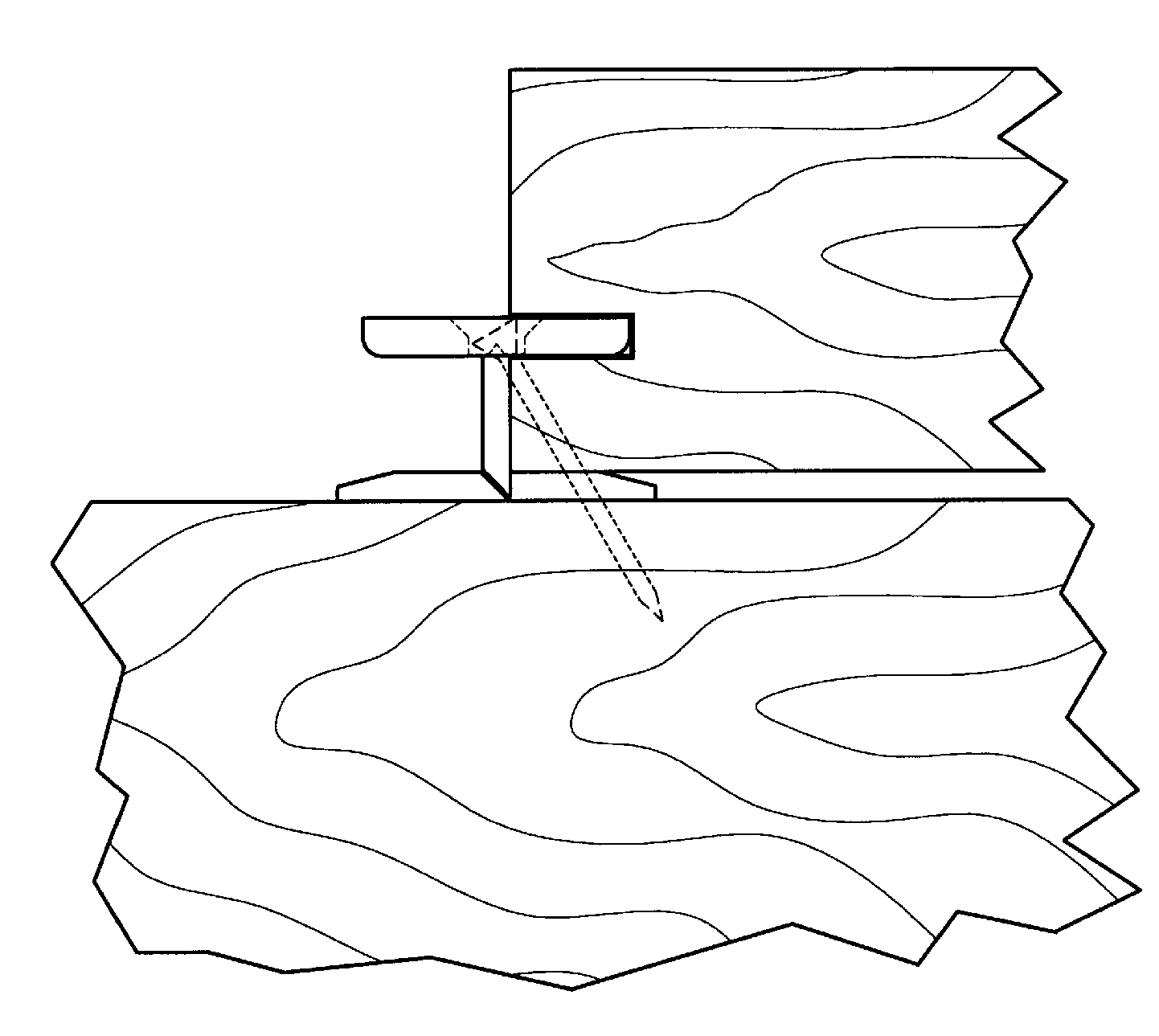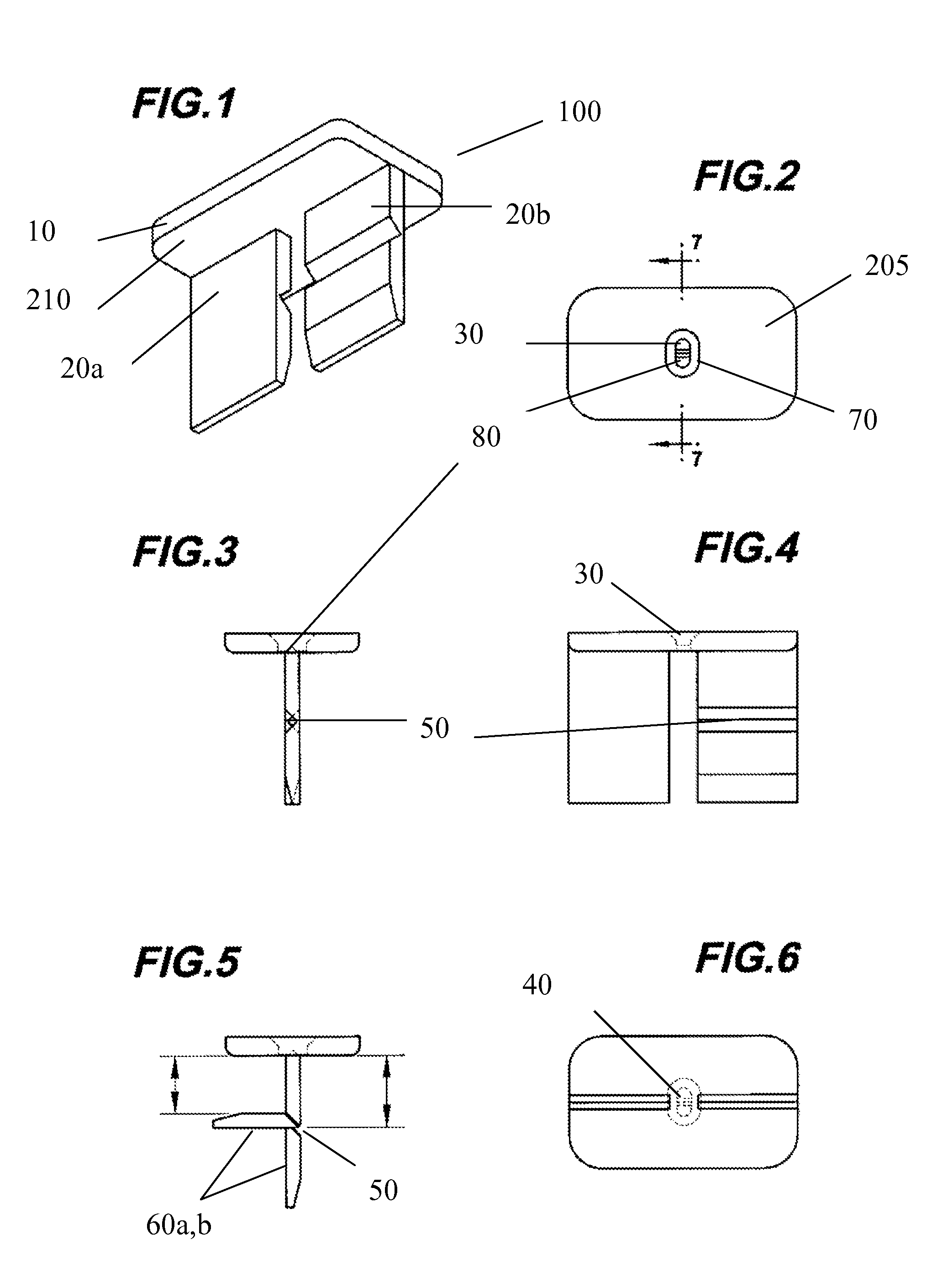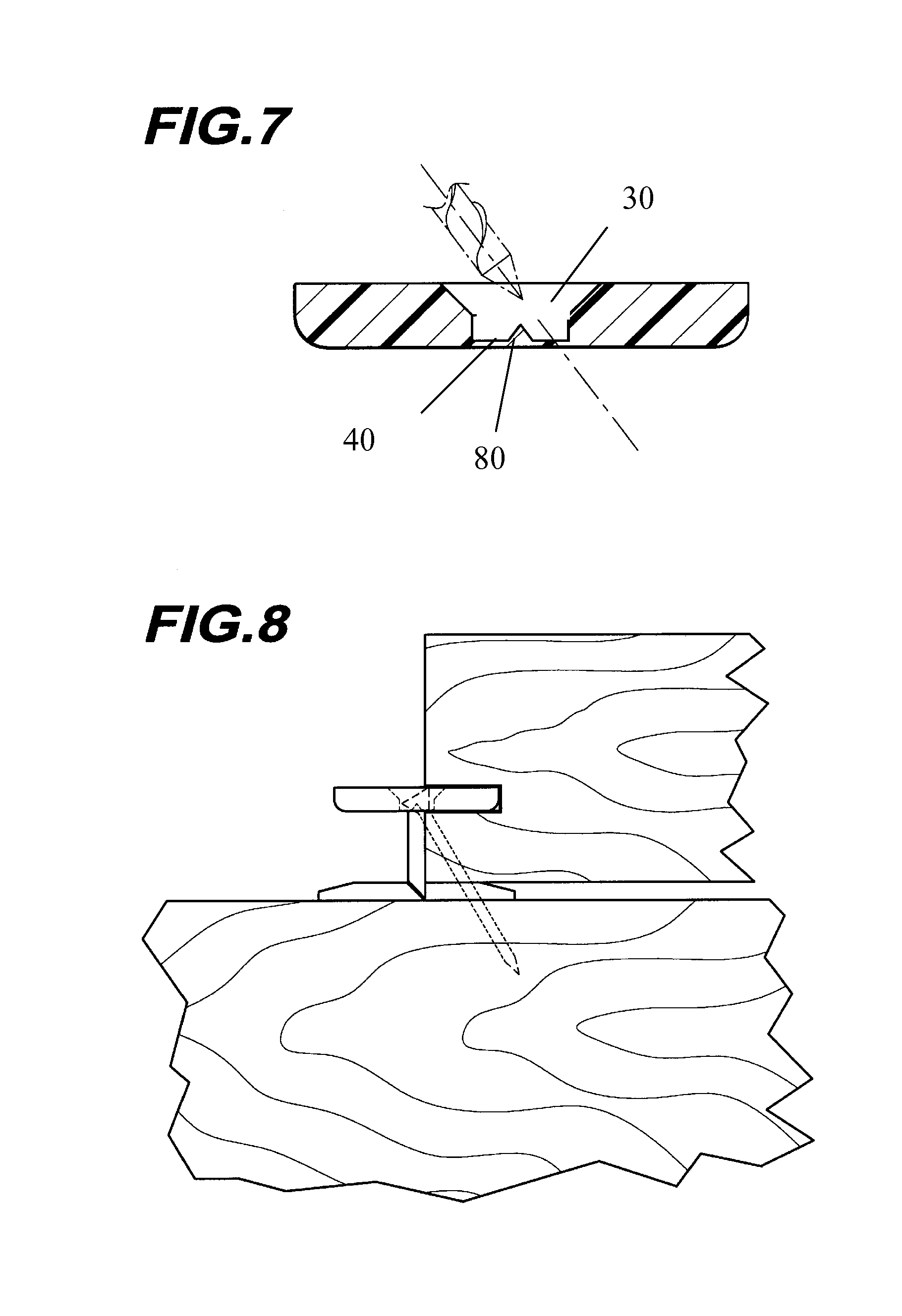Hidden deck fastener and method of use
a technology for hiding decks and fasteners, applied in the direction of fastening means, nails, constructions, etc., can solve the problems of rusting of nails and staining of deck boards, loosening of boards, and wood bruises, so as to prevent relative movement between adjacent boards and be easy to install
- Summary
- Abstract
- Description
- Claims
- Application Information
AI Technical Summary
Benefits of technology
Problems solved by technology
Method used
Image
Examples
example 1
[0037]An example of the present invention was manufactured from high density polyethylene (HDPE) using a sixteen (16) cavity mold in a 150 ton Engel injection molding machine. The example is essentially as shown in FIGS. 1-8. In this example, the biscuit core 10 is about ⅛″ thick, and the supporting legs 20a,b are about 3 / 32″ thick and ⅛″ apart. The feet 60a,b are defined by living hinges 50a,b at the lower end of the legs, and are activated by pushing the deck fastener 100 down against the joist. With the living hinged feet activated, the distance between the lower face of the biscuit core and the top side of the feet is ⅜″. In this example, the controlled flash is 0.025″ thick and the center beam is 0.05″ tall (at center of ridge). The deck fastener can be used with pre-grooved deck boards, or a ⅛″ router bit or a #20 biscuit cutter can be used to cut the slots, where needed. When cutting the slots, the slot should be cut in each board ⅜″ from the bottom surface. The deck fastener...
PUM
 Login to View More
Login to View More Abstract
Description
Claims
Application Information
 Login to View More
Login to View More - Generate Ideas
- Intellectual Property
- Life Sciences
- Materials
- Tech Scout
- Unparalleled Data Quality
- Higher Quality Content
- 60% Fewer Hallucinations
Browse by: Latest US Patents, China's latest patents, Technical Efficacy Thesaurus, Application Domain, Technology Topic, Popular Technical Reports.
© 2025 PatSnap. All rights reserved.Legal|Privacy policy|Modern Slavery Act Transparency Statement|Sitemap|About US| Contact US: help@patsnap.com



